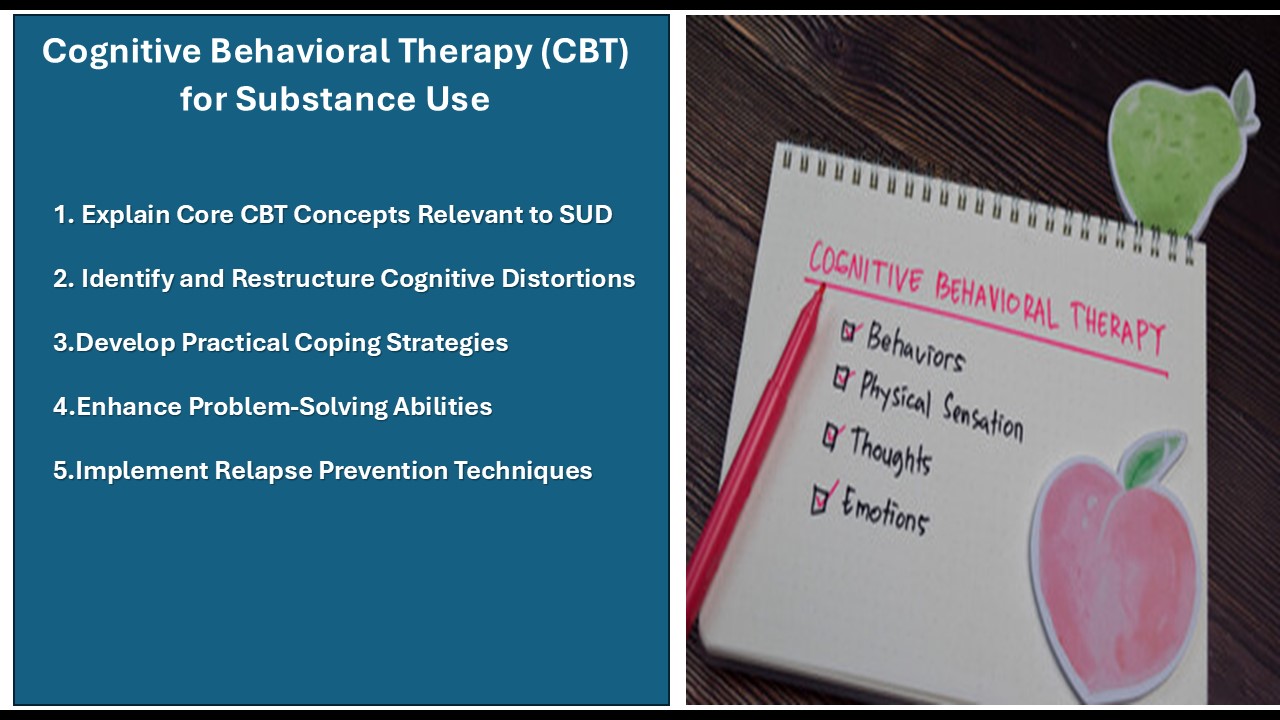A comprehensive, evidence-based approach designed to identify, reduce, and prevent problematic substance use through early intervention and referral to appropriate treatment services.
Screening, Brief Intervention, and Referral to Treatment (SBIRT)
Training Description:
Screening, Brief Intervention, and Referral to Treatment (SBIRT)
SBIRT training introduces evidence-based tools (like the AUDIT and DAST) for early identification
of problematic substance use and teaches short, motivational interventions to engage clients who
may be ambivalent about change. The course also covers referral pathways to higher levels of care
when needed. By the end, counselors can expect to confidently implement brief, targeted
interventions and link clients to the most appropriate services, improving early detection
and treatment outcomes. Scroll to the middle of the page to access the training and additional resources
- Define and Understand the Purpose of SBIRT
- Explain the Core Components of SBIRT
- Learn the Rationale and Evidence Base for SBIRT
- Demonstrate Step-by-Step SBIRT Implementation
- Develop Skills to Tailor SBIRT to Diverse Populations
Course Learning Objectives
This is a web-based self-paced training which provides 2 hours substance specific
board approved hours. The content for this project has been curated or developed by author Michael Daniels
MSW, LCAS, CCS, LCSW and other many amazing professionals who have donated their expertice and time to
ensure practitioners entering the addiction profession have access to quality trainings without barriers
of finance and access.
Receiving Credit: In order to receive credit for the training you must complete the interactive question within
the training. If you do not complete the embedded quizes, when you get to end of the training you will not
receive credit until you complete the embedded quiz questions. In Addition, you must complete the
50 item quiz at the end of the training and receive at least an 85% before receiving your certificate. You do have
the option of retaking the quiz until you reach the approved score. Once you submit your quiz, you will receive
your certificate with in 24 hours.
The process of using standardized tools to assess an individual’s substance use patterns and determine the level of risk or need for intervention.
A short, structured conversation aimed at increasing awareness of substance use risks and motivating individuals toward behavior change.
The process of connecting individuals with more intensive care, such as specialized substance use disorder treatment programs, based on their level of need.
A system that ensures individuals receive the appropriate level of intervention, treatment, and recovery support based on their substance use severity.
TA client-centered, evidence-based counseling method used in SBIRT to encourage individuals to explore and resolve ambivalence toward change.
A widely used screening tool developed by the World Health Organization (WHO) to identify problematic alcohol use.
A standardized screening tool used to assess drug use severity and identify individuals at risk for substance use disorders.
The process of categorizing individuals based on screening results to determine the appropriate level of intervention (low risk, moderate risk, high risk).
A strategy focused on addressing substance use before it escalates to a severe disorder, reducing health and social consequences.
A framework explaining how individuals modify behaviors, emphasizing the role of motivation, readiness, and self-efficacy in change.
An approach that focuses on minimizing the negative effects of substance use rather than solely promoting abstinence.
A healthcare approach that prioritizes the individual’s preferences, needs, and values when planning and delivering treatment.
The adaptation of SBIRT techniques to meet the needs of diverse populations by considering cultural, linguistic, and socioeconomic factors.
The benefit of SBIRT in decreasing long-term medical expenses by addressing substance use early and preventing severe health complications.

Below you will be able to access the training
- Course Introduction (10 minutes)
- Defining SBIRT & Its Purpose (15 minutes)
- Module 2: Core Components of SBIRT (20 minutes)
- Module 3: Rationale and Evidence Base for SBIRT (15 minutes)
- Step-by-Step SBIRT Implementation (30 minutes)
- Tailoring SBIRT for Diverse Populations (20 minutes)
- Course Wrap-Up & Final Assessment (10 minutes)
Additional Resources Related To This Training
Introduction to SBIRT
Articles Related To This Training
- Screening, Brief Intervention and Referral to Treatment (SBIRT) in Behavioral Healthcare
- Systems-Level Implementation of Screening, Brief Intervention, and Referral to Treatment TIP 33
- Effectiveness of brief interventions as part of the Screening, Brief Intervention and Referral to Treatment
- Integrating substance use peer support and screening brief intervention and referral to treatment services in the emergency department:
- Screening, Brief Intervention and Referral to Treatment(SBIRT): rationale, program overview and cross-site evaluation
Contact: Michael Daniels: Email: danielsm@ecu.edu: Phone: 252 7372117 for any technical questions
Editorial Disclaimer: Although all information contained in each training is based on validated research, any opinions expressed are those of the author's alone, and do not reflect
the opinions of affillate agencies. Although each training has an NCASPPB approved number, they
are not responsible for the content.